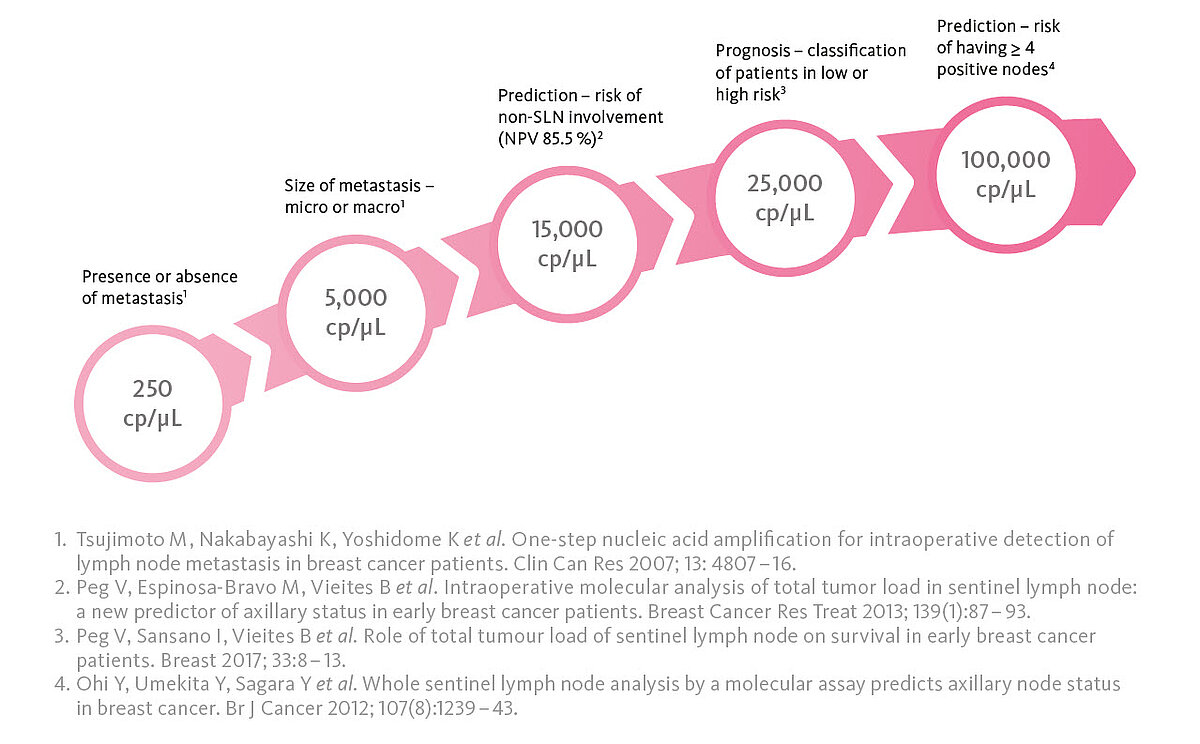Scientific Calendar June 2019
How can precision molecular diagnostics add value to nodal staging in breast cancer?
By qualitatively assessing positive and negative lymph nodes.
Quantitative molecular determination of the metastatic burden in the lymph nodes allows more reliable staging.
By allowing no exact quantification of metastatic burden in the lymph nodes.
By not providing prognostic and predictive information which goes above the simple detection of nodal metastasis.
Congratulations!
That's the correct answer!
Sorry! That´s not completely correct!
Please try again
Sorry! That's not the correct answer!
Please try again
Notice
Please select at least one answer
Scientific Background
When diagnosed with breast cancer, metastatic spread to axillary lymph nodes (ALN) is an important prognostic factor and an important criterion guiding treatment decisions. In patients with early-stage breast cancer, the sentinel lymph node biopsy (SLNB) is the standard procedure to evaluate whether ALN are affected or not. Should no metastases or only very low tumour loads be found in the sentinel lymph nodes (SLN), dissection of further axillary nodes can be avoided, enabling less invasive surgical interventions. This helps to significantly reduce morbidity in these patients and the risk for unwanted side-effects such as lymphedema. On the other hand, progressed metastatic spread in the nodes might indicate a more radical removal of further ALN and require adjuvant therapy and/or radiotherapy.
Therefore, a standardised and precise evaluation of metastatic spread to ALN is essential to choose the optimal treatment for each individual patient and to avoid over- or under-treatment.
Classical histopathology used to examine SLN usually does not analyse the whole lymph node tissue. Furthermore, protocols in institutions vary. Consequently, diagnostic information that is provided to clinicians is often limited and not standardised.
OSNA (One Step Nucleic Acid Amplification) is a molecular assay that determines the metastatic burden in the lymph nodes by quantification of CK19 mRNA expression. With this approach, the entire lymph node can be analysed in a very short time frame, thus allowing a more precise and standardised determination of SLN status, which is particularly crucial in the intra-operative setting. The quantitative OSNA result (CK19 mRNA copy number) not only provides information about the extent of the metastatic burden in SLN, but is also a valuable tool in predicting the risk of further metastatic nodes in the axilla as well as a patient’s prognosis as shown in several publications (see graphic below). Thus, OSNA adds value to nodal staging by providing more differentiated diagnostic information in comparison to conventional histopathology.
This allows clinicians to decide more safely about the degree of axillary surgery, whether and what kind of adjuvant therapy might be needed, and to select the appropriate radiotherapy regimen for each individual patient.
Graphics


